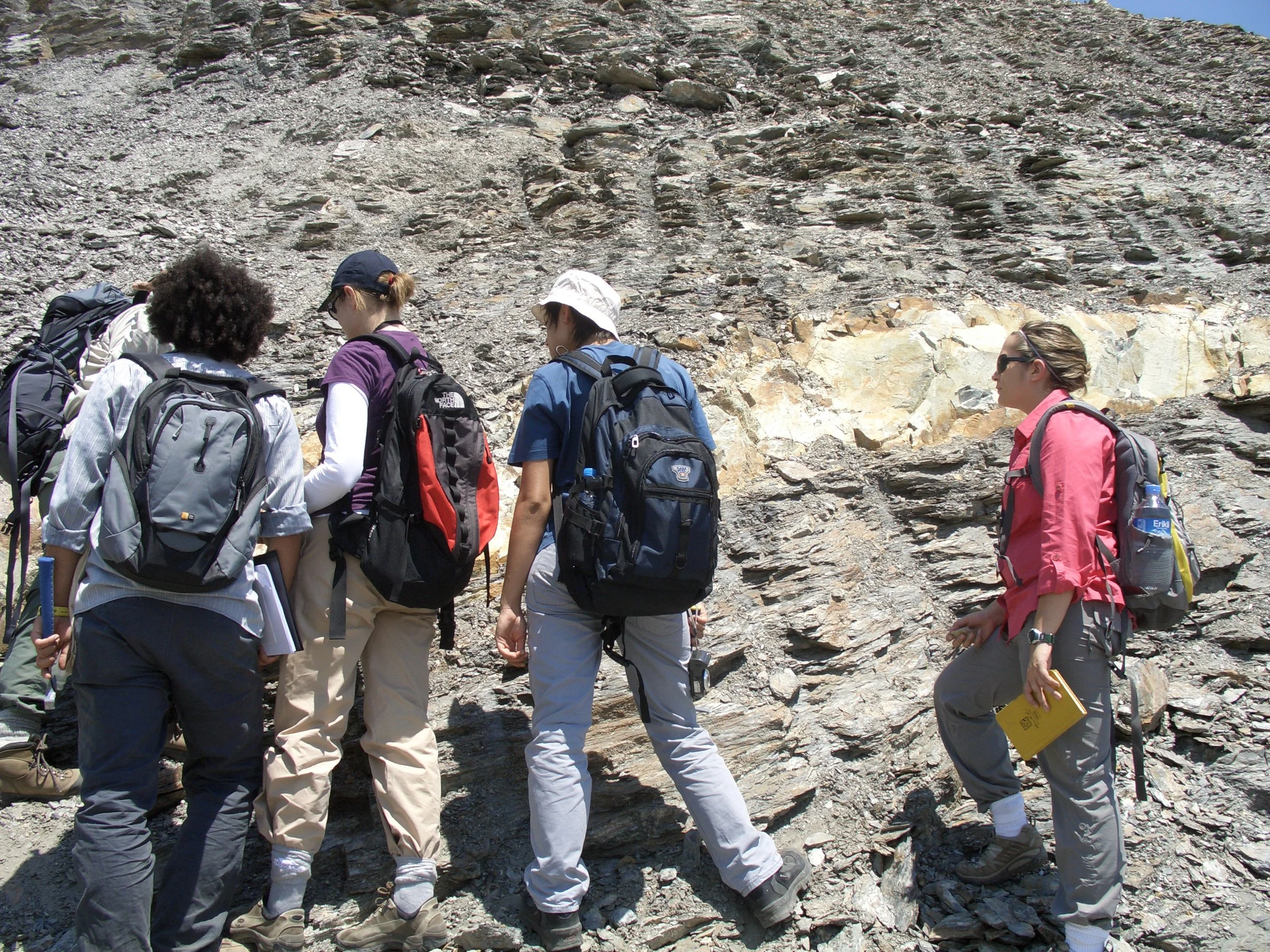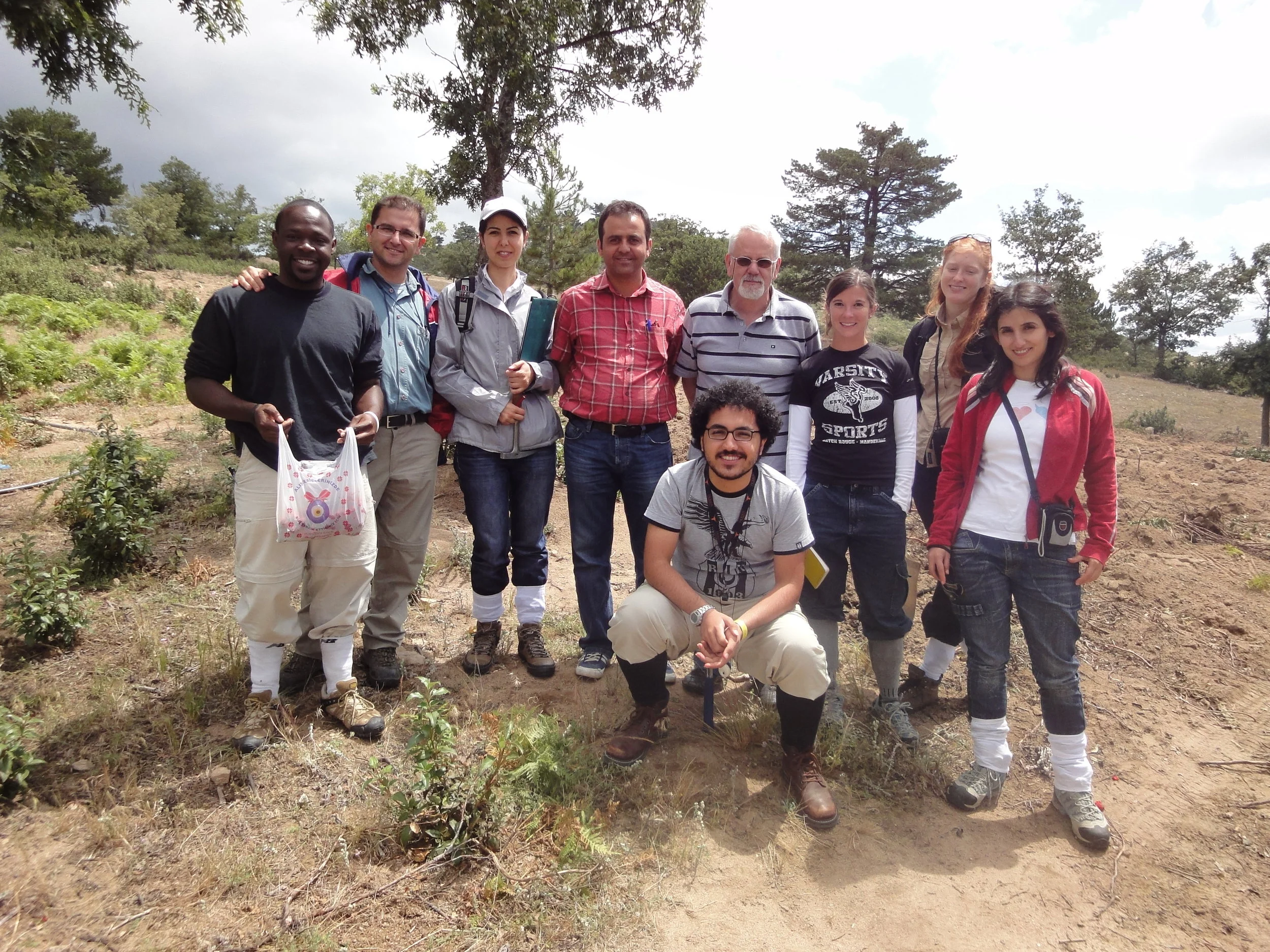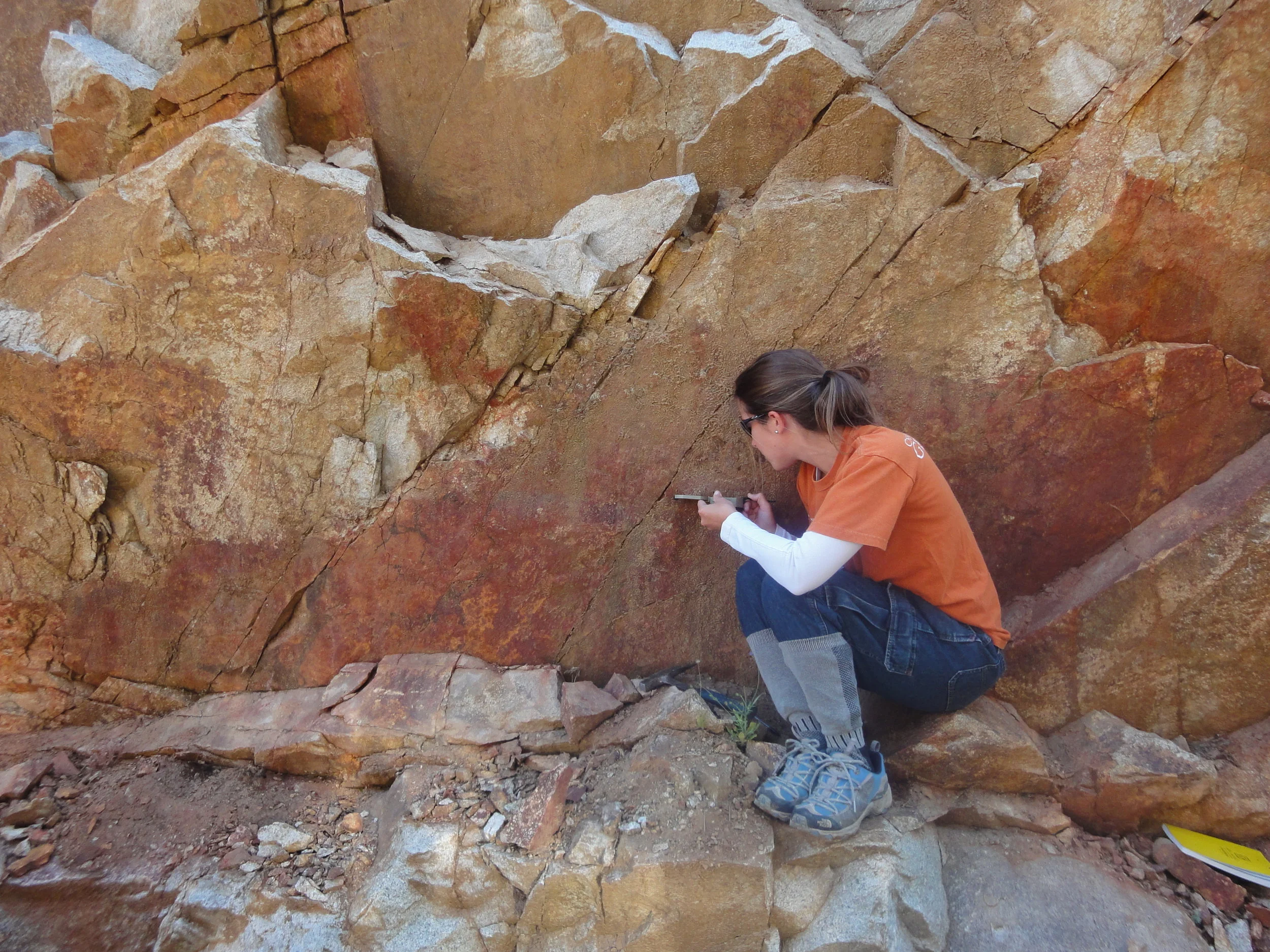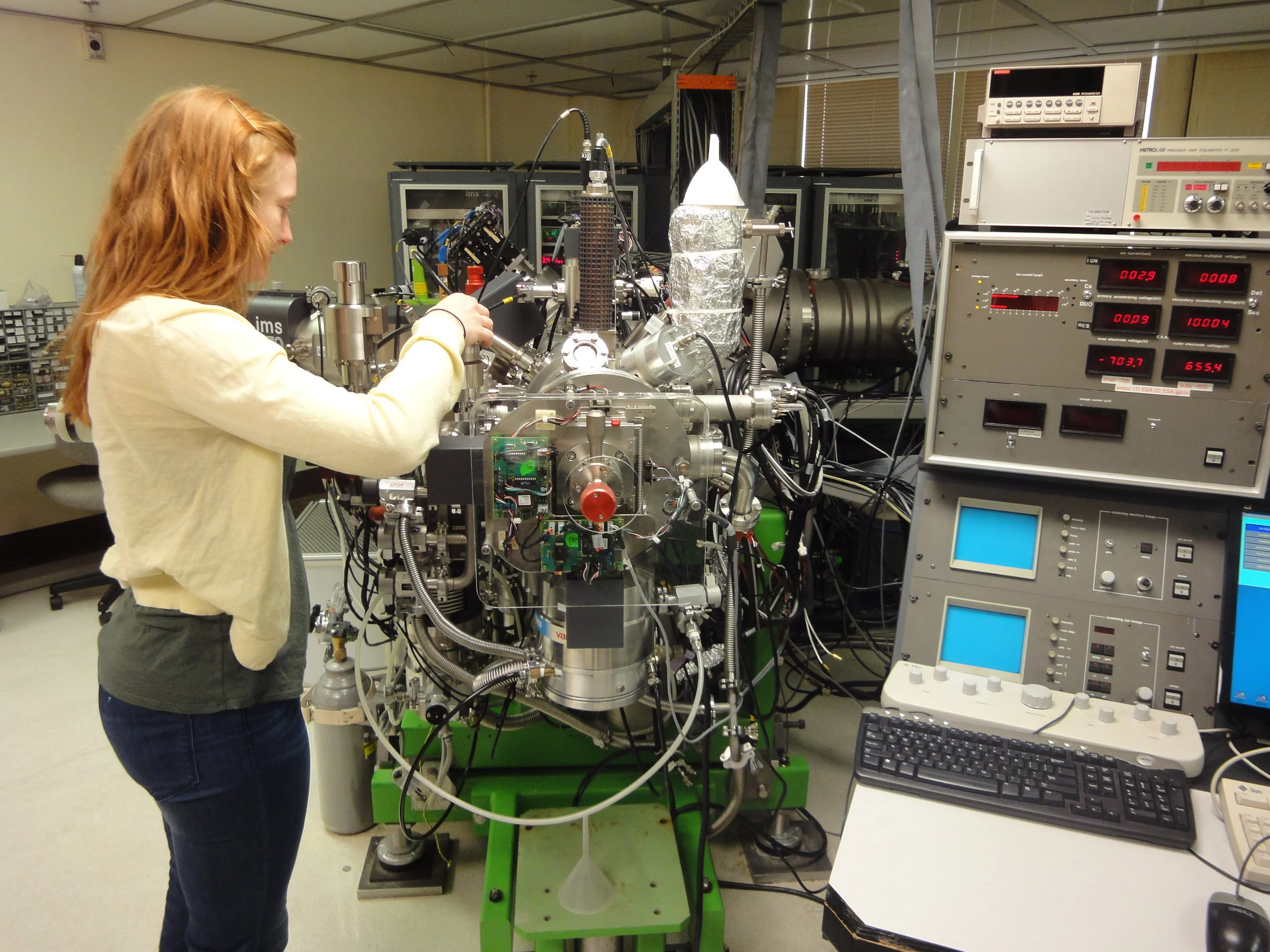The geology of Western Turkey is characterized by a series of continental collisions from Late Cretaceous to Eocene time and was then followed by a switch in motion to post-collisional extension. The exact nature of the timing of extension is controversial, but it caused the opening of the Aegean Sea, as well as the exhumation of several major metamorphic belts. The largest metamorphic core complex on the planet, the Menderes Massif, was created by this process. Rocks in the Menderes Massif show evidence of significant extension and the range itself covers an area of >40,000 km2.
Extension in the Menderes Massif, and the Aegean region in general have been the focus on a number studies. The result has been the development of fundamental tectonic models that have increased our understanding of plate tectonics in general. Hypotheses for the formation of the Menderes Massif can be tested using geochronology and thermobarometry, making the region a key locale in identifying the geological processes that facilitate extension in the continental lithosphere. We study this process by targeting its igneous and metamorphic rocks.
This project was funded by the NSF’s Tectonics and International Divisions.
Collaborators:
Ibrahim Cemen, Dept. Geological Sciences, University of Alabama
Tolga Oyman, Dept. Geological Engineering, Dokuz Eylul University
Thomas Etzel, Dept. Geological Sciences, UT Austin
Oscar Lovera, Dept. Earth, Planetary, and Space Sciences, UCLA
Mete Hancer, Dept. Geological Engineering, Pamukkale University
Rebekha January, University of Texas-El Paso
Peer-reviewed publications regarding this work:
Etzel TE, Catlos EJ, Atakturk K, Kelly ED, Lovera OM, Cemen I, Diniz E, Stockli D (2019) Implications for thrust‐related shortening punctuated by extension from P‐T paths and geochronology of garnet‐bearing schists. Tectonics 38 (6), 1974-1998.
Etzel TE, Catlos EJ, Cemen I, Ozerdem C, Oyman T, Miggins D (2020) Documenting exhumation in the central and northern Menderes Massif (western Turkey): New insights from garnet-based P-T estimates and K-feldspar 40Ar/39Ar geochronology. Lithosphere,1, 8818289, https://doi.org/10.2113/2020/8818289
Speciale P, Catlos EJ, Yildiz GO, Shin TA, Black KN (2014) Zircon Ages of the Beypazari Granitoid Pluton (North Central Turkey): Tectonic Implications. Geodinamica Acta. DOI: 10.1080/09853111.2013.858955
Catlos EJ, Huber K, Shin TA (2013) Geochemistry and geochronology of meta-igneous rocks from the Tokat Massif, north-central Turkey: implications for Tethyan reconstructions. International Journal of Earth Sciences.
Shin TA, Catlos EJ, Jacob L, Black K (2013) Relationships between very high pressure subduction complex assemblages and intrusive granitoids in the Tavşanlı Zone, Sivrihisar Massif, central Anatolia. Tectonophysics, 595-596:183-197.
Black KN, Catlos EJ, Oyman T (2013) Timing Aegean extension: Evidence from in situ U–Pb geochronology and cathodoluminescence imaging of granitoids from NW Turkey (Special Issue: Geodynamics and Magmatism). Lithos. DOI: 10.1016/j.lithos.2013.09.001
Catlos EJ, Jacob L, Oyman T, Sorensen SS (2012) Long-term exhumation of an Aegean metamorphic core complex granitoids in the northern Menderes Massif, western Turkey. American Journal of Science, 312, 534-571.
Catlos EJ, Baker C, Sorensen SS, Jacob L, Cemen I (2011) Linking microcracks and mineral zoning of detachment-exhumed granites to their tectonomagmatic history: Evidence from the Salihli and Turgutlu plutons in western Turkey (Menderes Massif), Journal of Structural Geology, 33, 951- 969.
Catlos EJ, Baker C, Sorensen SS, Cemen I, Hancer M (2010) Geochemistry, geochronology, and cathodoluminescence imagery of the Salihli and Turgutlu granites (central Menderes Massif, western Turkey): Implications for Aegean tectonics. Tectonophysics, 488, 110-130.
Cemen I, Catlos EJ, Gogus O, Ozerdem C (2006) Post-Collisional Extensional Tectonics and Exhumation of the Menderes Massif in the Western Anatolia Extended Terrane, Turkey. In: Postcollisional Tectonics and Magmatism in the Eastern Mediterranean Region. Geological Society of America’s Special Paper, (Ed.) Y. Dilek., 409, 353-379.
Catlos EJ, Cemen I (2005) Monazite ages and the evolution of the Menderes Massif, western Turkey. International Journal of Earth Sciences, 94, 204-217.









